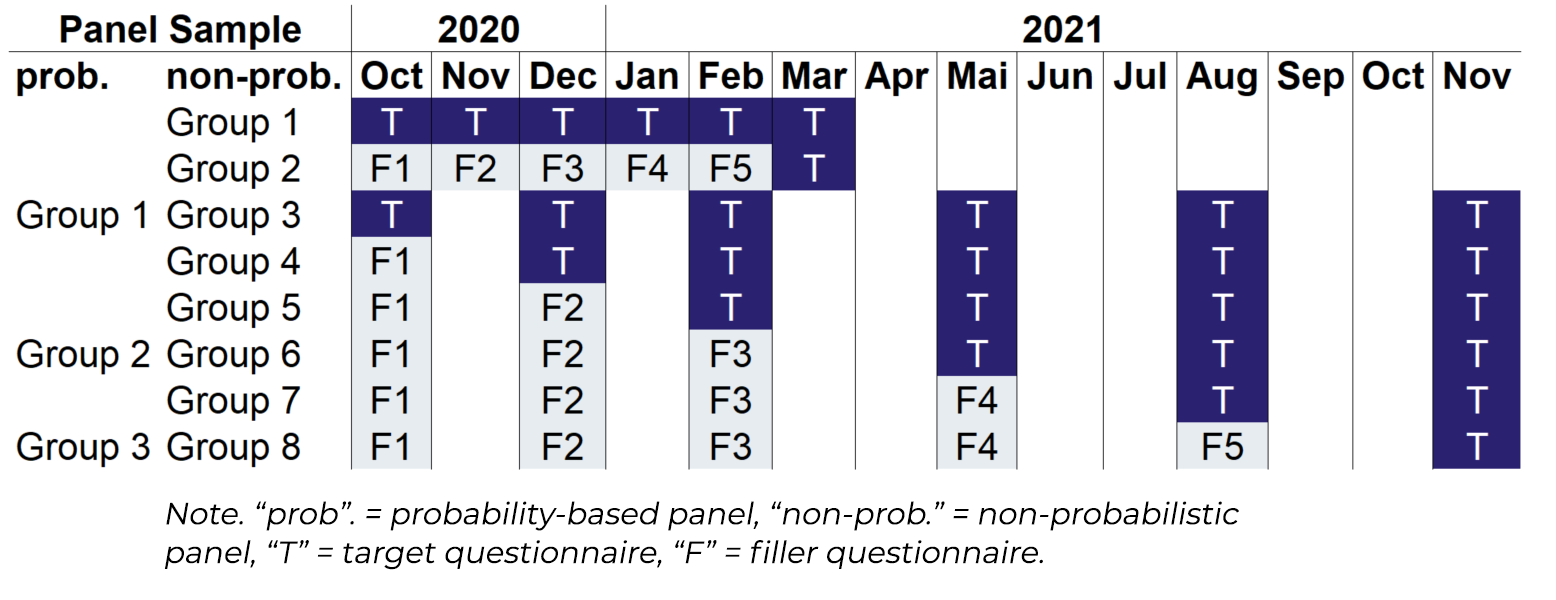
Mechanisms of Panel Conditioning in Longitudinal Studies: Reflection, Satisficing, and Social Desirability (PaCo)
A Joint Research Project by GESIS, ZPID, and Utrecht University
Research Design
Data is collected within two different panel surveys, that is a) a probability-based mixed-mode panel (i.e., the GESIS Panel) and b) a non-probability online panel (i.e., the Study on Science and Society) hosted by ZPID - Leibniz Institute for Psychology.
For both studies, the project employs an experimental design to investigate the impact of different dosage conditions, that is, different intervals between survey waves and the frequency with which identical questions are asked across waves, on PCE.
The study within the probability-based panel survey is characterized by a 3-factorial experiment manipulating the frequency of answering identical questions (1 time vs. 3 times vs. 6 times) over the course of the study. Intervals between singel survey waves have not been manipulated as respondents of the GESIS Panel are uniformly surveyed every 2 to 3 months. However, the study within the non-probability panel includes a partly-crossed 2x6-factorial experiment manipulating the interval between single survey waves (1 month vs. 2-3 months) as well as the frequency with which identical questions are asked over the course of the study (from 1 to 6 times).
To manipulate the frequency of receiving identical questions (i.e., target questions) over the course of the study, additional questionnaire versions with filler items have been constructed. Thus, dependent on their assignment to an experimental group, respondents either received the questionnaire with target items in the conditioning state or a filler questionnaire. The questionnaires with filler items varied with each survey to prevent confounding conditioning effects on the content of the filler items.
In total, the project’s research design results in 8 experimental groups which are a) fielded in different waves dependent on their assignment to the conditioning interval manipulation (1 month vs. 2-3 months) b) receive different questionnaire versions depending on their assignment to the conditioning frequency manipulation (1 to 6 times). Three of the 8 experimental groups (i.e., Group 3, Group 6, and Group 8) are both represented in the probability-based as well as the non-probability study to enable the investigation of dosage effects on the magnitude of PCE for different samples.
The figure below illustrates the specific research design showing the wave schedule as well as the administered questionnaire versions for the single experimental groups.


